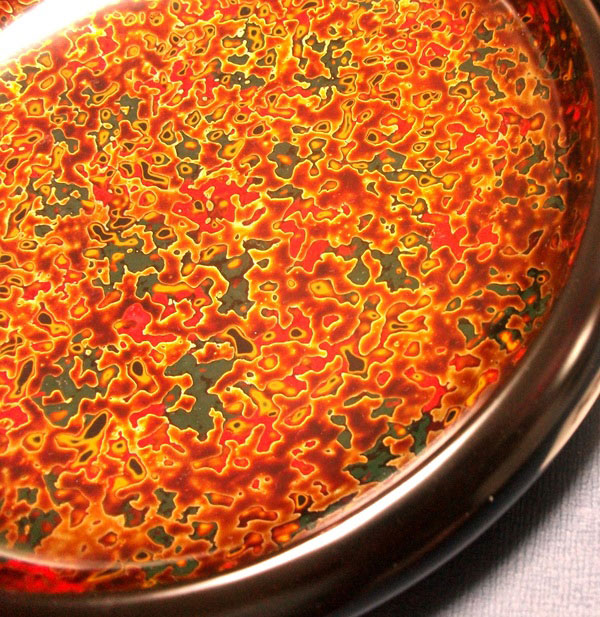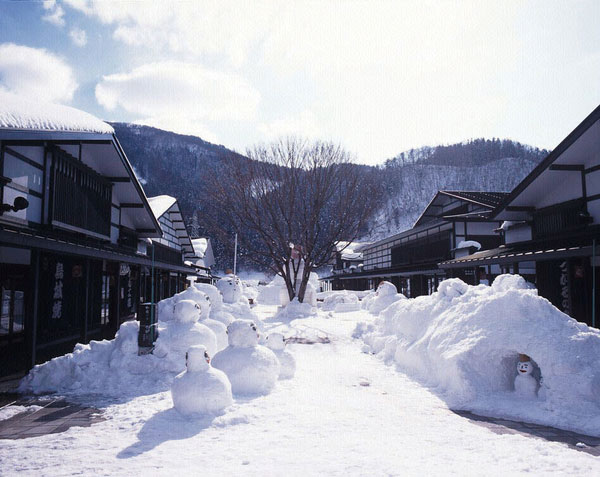
- Lacquerware
- Aomori
Tsugaru lacquerware Tsugaru nuri
Layers of bright colors and modern black lacquer
make a powerful and elegant lacquerware
Description
What is Tsugaru lacquerware ?
Tsugaru lacquerware (called tsugaru nuri in Japanese) is produced around the city of Hirosaki in Aomori prefecture. Lacquerware has been produced in this region since the middle of the Edo period (1603-1868), but it began to be called Tsugaru lacquerware only after being exhibited in 1873 at the World Exposition in Vienna. Today, Tsugaru lacquerware is used as a general term for traditional lacquerware produced in the Tsugaru region.
The notable features of Tsugaru lacquerware are its practicality, durability and highly refined appearance. The unique togidashi kawari nuri technique makes beautiful multi-layered patterns of colored lacquer stand out. Lacquer is coated dozens of times onto a base made using Tsugaru cypress. This process is carried out repeatedly for two months in order to produce strong, thick and beautiful lacquerware.
Diverse coating techniques were developed in the Edo period, including techniques that are still used today. Some of these techiques are the standard kara nuri, nanako nuri which uses small patterns, monsha nuri which uses charcoal and black lacquer to leave a stylish impression, and nishiki nuri which has complex patterning and requires advanced skill.
History
Tsugaru lacquerware started being produced during the middle of the Edo period, when Nobumasa TSUGARU (1646-1710), the fourth feudal lord of Hirosaki domain in what is today Aomori prefecture, was in power. In 1642, the administrative system of alternate attendance called (sankin kotai) had been established. This system meant that each feudal lord had to alternate living for a year in their domain, and in the capital city of Edo (former name of Tokyo). Through this system the cultures of Kyoto and Edo were transmitted to the provinces. Protection for local industries was put into place and many handicrafts were newly created. Lacquer masters were even invited to Hirosaki domain, and before long, lacquer master Genbe IKEDA created a unique type of lacquerware. At first, this was used to decorate the scabbards (close-fitting cover for the blade of short swords) that were used by samurai, but after a while other furnishings came to be produced utilizing the method of Tsugaru lacquerware.
According to the document ,“Tsugaru Information Chronicle”, written by traders of those days, the lacquer coating technique (kara nuri) had already been established by 1758, and various articles such as document boxes, stacked bento boxes, and short sword scabbards were being produced. Tsugaru lacquerware furnishings were used as gifts to the Imperial Court, the nobility, and the shogunate. The production methods were cordially protected and developed by the Tsugaru domain.
Going into the Meiji period (1868-1912), Aomori prefecture exhibited lacquerware produced in the Tsugaru region as Tsugaru lacquerware at the World Exposition held in Vienna in 1873. This led to the name Tsugaru lacquerware becoming widely known, and it became a leading handicraft from Aomori prefecture.
General Production Process
- 1. Wood collection
For the first step, the wood is lumbered, dried thoroughly, cut into smaller pieces, and shaped with a hand plane. When cutting the wood, the hard, cracked portions, knots and core of the wood are imprecisely cut off. Cypress wood is used for producing furniture such as trays and low tables that are made by jointing boards. Japanese magnolia wood is used for items that will be sawed such as bowls cut on a potter's wheel.
- 2. Fabric dressing
The main undercoating technique used for Tsugaru lacquerware is called katashitaji (solid undercoating).
To begin with, wood polishing is carried out to prepare the surface for rubbing (urushi) or Japanese lacquer directly onto the surface in order to make it waterproof.
Next, in order to protect the wood from damages or warping, fabric is pasted with starch lacquer produced by mixing rice starch with Japanese lacquer.
The fabric is wrapped around the surface of the wood so that it sticks firmly.
- 3. Clay application
At first, the coarsest base lacquer is applied and gradually changes to a fine lacquer. Yamashina polishing powder, a mixture of raw and starch lacquer, is used for clay lacquer.
After coating evenly with a spatula and drying an adequate amount, the surface is polished on a whetstone.
Then, finer polishing powder is applied and polished in the same manner to be rust-proof. The fact that all of the undercoating until this point has been done without any water is peculiar. An intermediate coat of lacquer is applied in order to finish portions that will not have any patterns, such as the back of a stacked bento box.
- 4. Preparation
On top of the undercoat, a speckled pattern is drawn with preparatory lacquer, which is a mixture of sugurome lacquer, pigments and egg white. Patterns are applied to all the surfaces using a small spatula, and the lacquer is thoroughly dried to the core over approximately five days.
- 5. Coating
After the preparatory lacquer has dried, colored lacquer is applied on top with a paintbrush. In order to make the patterns stand out, a coat of colored lacquer with a strong contrast, such as yellow or black is applied.
- 6. Coloring
A scattered checkered pattern is drawn with color lacquer including the color tones of kara nuri which begins to produce a brilliance. The colored lacquer that is mainly used is a mixture of red and green. The coloring produces the unique pattern of kara nuri. A subdued color tone is further achieved by applying clear, dark reddish-brown lacquer over top of the patterns.
- 7. Color adjustment
A thin lacquer coat is applied over the entire article, and tin powder is sprinkled over top.
After polishing a kara nuri pattern, the coating lacquer of tsuma nuri borders the boundary between the base color and patterns, making the pattern stand out.
- 8. Overcoating
Depending on the color used for finishing, like red lacquer or sugurome lacquer, the name that the item is called will vary. Overcoating is applied heavily with a paintbrush.
- 9. Polishing
To begin with, a rough polish is done to remove any unevenness.
In order to adequately dry the planed surfaces, the pieces are then placed inside a lacquer bath which dry them by maintaining the appropriate humidity and temperature.
Then, the patterns are carved even more. Lacquer is applied to dented parts, and polishing is done by repeating the coating process many times over.
- 10. Detailed polishing
After the rough polishing process, the pieces are repeatedly polished again but with oil polishing powder which is made by mixing canola oil and polishing powder. Once the polishing is done, the pieces are completely wiped off to ensure that no oil content remains.
- 11. Wax coating
Charcoal that has been coated with wax-colored lacquer is used to repeatedly polish and wipe off the piece little by little to produce a glossy look.
After being painted with wax-colored lacquer, the pieces are complete.
Where to Buy & More Information
Tsugaru Densyo Kogeikan

-
Address
-
Tel.+81-172-59-5300
-
ClosedDecember 29 to January 3 and Mondays during December to March
-
Business Hours9am to 5pm
-
Website
See more Lacquerware
- Wajima lacquerware
- Kamakura-bori lacquerware
- Tsugaru lacquerware
- Aizu lacquerware
- Yamanaka lacquerware
- Kawatsura lacquerware
- Echizen lacquerware
- Joboji lacquerware
- Kiso lacquerware
- Hidehira lacquerware
- Kagawa lacquerware
- Ryukyu lacquerware
- Takaoka lacquerware
- Wakasa lacquerware
- Hida-shunkei lacquerware
- Ouchi lacquerware
- Kanazawa lacquerware
- Kishu lacquerware
- Kyo laquerware
- Odawara lacquerware
- Naruko lacquerware
- Niigata lacquerware
- Murakami carved lacquerware































































































































































































































































































